
L.T.Mai Hoa, V.Thi Hien,... / Tạp chí Khoa học và Công nghệ Đại học Duy Tân 04(65) (2024) 163-169
163
Chemical composition of Premna serratifolia L. leaf essential oil
growing in Vietnam
Thành phần hóa học tinh dầu lá của Premna serratifolia L. ở Việt Nam
Le Thi Mai Hoaa, Vu Thi Hienb, Vo Thanh Thuongc, Le Thi Thanh Trucc,
Nguyen Thi Thuc, Prabodh Satyald, Bui Van Nguyene, Nguyen Huy Hungf*, William N. Setzerg
Lê Thị Mai Hoaa, Vũ Thị Hiềnb, Võ Thanh Thươngc, Lê Thị Thanh Trúcc,
Nguyễn Thị Thuc, Prabodh Satyald, Bùi Văn Nguyêne, Nguyễn Huy Hùngf, William N. Setzerg
aFaculty of Pharmacy, Vinh Medical University, 161 Nguyen Phong Sac, Vinh, 461150, Vietnam
aKhoa Dược, Đại học Y Khoa Vinh, số 161 Nguyễn Phong Sắc, Vinh, 461150, Việt Nam
bFaculty of Hydrometeorology, Ho Chi Minh City University of Natural Resources and Environment,
Ho Chi Minh City 700000, Vietnam
bKhoa Khí tượng, Đại học Tài nguyên và Môi trường Thành phố Hồ Chí Minh, Thành phố Hồ Chí Minh, 700000,
Việt Nam
cDepartment of Pharmacy, Duy Tan University, Da Nang, 550000, Vietnam
cKhoa Dược, Trường Y - Dược, Trường Đại học Duy Tân, Đà Nẵng, 550000, Việt Nam
dAromatic Plant Research Center, 230 N 1200 E, Suite 100, Lehi, UT 84043, USA
dTrung tâm Nghiên cứu Thực vật thơm, 230 N 1200 E, Suite 100, Lehi, UT 84043, Mỹ
eUniversity of Khanh Hoa, 01 Nguyen Chanh, Nha Trang, Khanh Hoa, 650000, Viet Nam
eĐại học Khánh Hòa, số 01 Nguyễn Chánh, Nha Trang, Khánh Hòa, 650000, Việt Nam
fCenter for Advanced Chemistry, Institute of Research and Development, Duy Tan University, Da Nang, 550000,
Vietnam
fTrung tâm Hóa Tiên tiến, Viện Nghiên cứu và Phát triển, Trường Đại học Duy Tân, Đà Nẵng, 550000, Việt Nam
gDepartment of Chemistry, University of Alabama in Huntsville, Huntsville, AL 35899, USA
gKhoa Hóa học, Đại học Alabama tại Huntsville, Huntsville, AL 35899, Mỹ
(Date of receiving article: 26/01/2024, date of completion of review: 22/04/2024, date of acceptance for posting:
01/07/2024)
Abstract
The essential oil extracted from the leaves of Premna serratifolia underwent hydrodistillation using a Clevenger-type
apparatus and was subsequently subjected to analysis through gas chromatography coupled with mass spectrometry
(GC/MS). The predominant compounds in the essential oil were those with sesquiterpene skeletons, in both hydrocarbon
and oxygenated forms. Notable constituents included caryophyllene oxide, accounting for 23.4% of the oil, (E)-β-
caryophyllene at 15.5%, as well as phytol (6.9%), α-copaene (5.5%), and δ-cadinene (4.4%).
Keywords: Lamiaceae; sesquiterpenoids; caryophyllene oxide; β-caryophyllene.
*Corresponding author: Nguyen Huy Hung
Email: nguyenhuyhung@duytan.edu.vn
04(65) (2024) 163-169
DTU Journal of Science and Technology
D U Y T A N U N I V E R S I T Y
TẠP CHÍ KHOA HỌC VÀ CÔNG NGHÊ ĐẠI HỌC DUY TÂN

L.T.Mai Hoa, V.Thi Hien,... / Tạp chí Khoa học và Công nghệ Đại học Duy Tân 04(65) (2024) 163-169
164
Tóm tắt
Tinh dầu được chiết xuất từ lá Premna serratifolia trải qua quá trình chưng cất thủy phân bằng thiết bị loại Clevenger và
sau đó được phân tích thông qua sắc ký khí kết hợp với phép đo phổ khối (GC/MS). Các hợp chất chiếm ưu thế trong tinh
dầu là những hợp chất sesquiterpene, ở cả dạng hydrocarbon và oxy hóa. Thành phần chính bao gồm caryophyllene oxit,
chiếm 23,4% trong dầu, (E)-β-caryophyllene ở mức 15,5%, cũng như phytol (6,9%), α-copaene (5,5%) và δ-cadinene
(4,4%).
Từ khóa: Lamiaceae; sesquiterpene; caryophyllene oxide; β-caryophyllene.
1. Introduction
Premna serratifolia L. (Syn. Premna
integrifolia Linn.) is a tree, 2-7 meters tall.
Leaves are oval-shaped, base nearly heart-
shaped and often asymmetrical, upper surface
hairless, underside sparsely hairy, five-veined.
The inflorescence is at the top of the branch,
panicle form with many small white flowers.
The fruits are 3-4 mm wide, black when ripe
[14]. The tree grows in tropical to subtropical
coastal regions including Asia, Africa, Australia
and the Pacific [9]. Some morphological
features, such as leaf shape and size, and
inflorescence size and calyx form, vary over
different geographical distribution areas [9,19].
The plant grows wild or is grown as a spice.
The plant is used in Vietnamese traditional
medicine for purposes such as good remedy for
urination, increasing lactation for women,
treating dysentery, good use for digestion and
treating rheumatism [14]. In addition, the leaves
of this species have been used as a spice in many
dishes.
The composition of the non-volatile
compounds of P. serratifolia has been previously
published and includes lignans [23-26], iridoids
[12,13], flavonoids [4], steroid [6], triterpenoids
[4,6], alkaloids [8], and diterpenoids [11, 27, 28].
The objective of this research is to identify
the chemical composition of essential oil found
in P. serratifolia leaves, with the aim of
enhancing our understanding of its utility. This
investigation is an integral component of a
broader exploration into the chemical
constituents of essential oils derived from
indigenous Premna species in Vietnam.
2. Materials and methods
2.1. Plant material
Fresh leaves of P. serratifolia were gathered
from a coastal area on the Son Tra Peninsula in
Da Nang City in September 2019 (coordinates:
16° 05ʹ 53ʺ N, 108° 16ʹ 01ʺ E, elevation 4
meters). Dr. Do Ngoc Dai verified the tree's
identity. The freshly collected plant material was
stored at a laboratory temperature of 25°C, and
a fan was employed to facilitate water
evaporation, thereby preventing alterations in
the chemical composition of the essential oils.
Four kilograms of freshly harvested leaves were
finely chopped and subjected to hydrodistillation
over a five-hour period, utilizing a Clevenger-
type apparatus. This process yielded an essential
oil with an extraction efficiency of 0.02%. The
resulting essential oil was subsequently
dehydrated using sodium sulfate (Na2SO4) and
then carefully stored in sealed glass vials at a
temperature of 4°C.
2.2. Gas chromatography / mass spectrometry
(GC/MS)
Gas chromatographic- mass spectral analyses
was carried out using a Shimadzu GCMS-
QP2010 Ultra instrument in electron impact (EI)
mode, where the electron energy was set at 70
eV. The scan range spanned from 40 to 400
atomic mass units, acquiring data at a rate of 3.0
scans per second [16]. The GC column applied
in this study was a ZB-5ms fused silica capillary
column provided by Phenomenex, Torrance,

L.T.Mai Hoa, V.Thi Hien,... / Tạp chí Khoa học và Công nghệ Đại học Duy Tân 04(65) (2024) 163-169
165
CA, USA, featuring a stationary phase of (5%
phenyl)-polymethylsiloxane and a film
thickness of 0.25 μm. Helium served as the
carrier gas, with a column head pressure set at
552 kPa and a flow rate of 1.37 mL/min. The
injector and ion source were maintained at a
constant temperature of 260 °C. For the GC oven
temperature program, the initial temperature was
established at 50 °C, with a subsequent linear
increase at a rate of 2 °C per minute until it
reached 260 °C. To facilitate the analysis, the
essential oil was dissolved in CH2Cl2 to create a
5% solution, from which 0.1 μL was introduced
into the system utilizing a 30:1 split ratio.
Compound identification was executed based on
retention index and mass spectral fragmentation
patterns, with comparisons to established
databases [1, 10, 20, 22].
3. Results and discussion
GC/MS analysis identified 68 compounds
from leaf essential oil of P. serratifolia,
accounting for 93.7% of the total components.
Sesquiterpene compounds were dominant in
essential oils. The main ingredients include
caryophyllene oxide (23.4%), (E)-β-
caryophyllene (15.5%) along with phytol
(6.9%), α-copaene (5.5%) and δ-cadinene
(4.4%) (Table 1).
Al-Reza et al. (2016) [3] and Rahman et al.
(2016) [21] reported the chemical composition
from Premna integrifolia Linn leaves collected
in Bangladesh. Both articles reported the same
results, according to which the main chemical
components included phytol, α-humulene,
spathulenol (27.3, 14.2, 12.1%, respectively),
and were followed by ingredients such as 1-
octen-3-ol (8.2%), eugenol (6.7%), and
phenylethyl alcohol (5.8%). In addition to
differences in geographical origin, both the
timing of plant sampling and the use of gas
chromatography columns vary.
Table 1. Chemical composition of Premna serratifolia essential oil
RIcalc
RIdb
Compound
%
934
932
α-Pinene
0.2
950
950
Camphene
0.1
972
971
Sabinene
0.1
978
978
β-Pinene
0.3
989
989
Myrcene
0.1
1025
1025
p-Cymene
0.3
1029
1030
Limonene
0.9
1031
1031
β-Phellandrene
tr
1032
1032
1,8-Cineole
0.1
1035
1034
(Z)-β-Ocimene
tr
1046
1045
(E)-β-Ocimene
0.1
1099
1101
Linalool
0.3
1180
1180
Terpinen-4-ol
0.1
1195
1195
α-Terpineol
tr
1283
1282
Bornyl acetate
0.1
1288
1287
Dihydroedulan IA
tr
1294
1294
Dihydroedulan IIA
0.2
1346
1349
α-Terpinyl acetate
0.1
1347
1348
α-Cubebene
0.1

L.T.Mai Hoa, V.Thi Hien,... / Tạp chí Khoa học và Công nghệ Đại học Duy Tân 04(65) (2024) 163-169
166
1376
1377
α-Copaene
5.5
1378
1379
(E)-β-Damascenone
0.1
1382
1383
cis-β-Elemene
0.1
1384
1382
β-Bourbonene
0.2
1388
1387
7-epi-Sesquithujene
0.3
1390
1390
trans-β-Elemene
1.7
1402
1405
Sesquithujene
0.2
1405
1405
(Z)-β-Caryophyllene
0.2
1407
1406
α-Gurjunene
0.3
1420
1417
(E)-β-Caryophyllene
15.5
1429
1427
γ-Elemene
0.2
1433
1433
trans-α-Bergamotene
0.6
1435
1436
α-Guaiene
0.2
1438
1438
Aromadendrene
0.4
1452
1452
(E)-β-Farnesene
0.3
1456
1455
α-Humulene
3.5
1460
1457
allo-Aromadendrene
2.3
1475
1478
γ-Muurolene
0.4
1481
1480
ar-Curcumene
1.6
1488
1491
Eremophilene
1.1
1490
1492
β-Selinene
1.1
1497
1497
α-Selinene
0.5
1499
1500
α-Muurolene
0.3
1502
1505
α-Bulnesene
0.1
1508
1508
β-Bisabolene
1.8
1513
1512
γ-Cadinene
0.4
1518
1518
δ-Cadinene
4.4
1521
1519
trans-Calamenene
0.3
1541
1541
α-Calacorene
1.1
1561
1560
(E)-Nerolidol
1.5
1562
1560
β-Calacorene
0.8
1577
1576
Spathulenol
1.1
1586
1587
Caryophyllene oxide
23.4
1589
1590
Globulol
0.2
1613
1613
Humulene epoxide II
2.3
1619
1618
α-Corocalene
0.2
1629
1632
Muurola-4,10(14)-dien-1α-ol
0.6
1640
1636
Caryophylla-4(12),8(13)-dien-5β-ol
0.6
1659
1663
cis-Calamenen-10-ol
2.2
1661
1665
Intermedeol
0.4
1667
1670
trans-Calamenen-10-ol
1.6
1675
1677
Cadalene
2.1
1689
1688
α-Bisabolol
0.2
1703
1701
10-nor-Calamenen-10-one
0.4
1842
1841
Phytone
0.8
1994
1994
Manoyl oxide
1.6

L.T.Mai Hoa, V.Thi Hien,... / Tạp chí Khoa học và Công nghệ Đại học Duy Tân 04(65) (2024) 163-169
167
2108
2109
Phytol
6.9
2300
2300
Tricosane
0.2
2500
2500
Pentacosane
0.2
Monoterpene hydrocarbons
2.1
Oxygenated monoterpenoids
0.6
Sesquiterpene hydrocarbons
45.9
Oxygenated sesquiterpenoids
35.0
Diterpenoids
8.5
Others
1.6
Total identified
93.7
RIcalc refers to the retention indices
calculated by referencing a homologous series of
n-alkanes on a ZB-5ms column. Ridb stands for
retention indices acquired from well-established
databases (Adams, 2017; FFNSC 3, n.d.;
NIST17, 2017; Satyal, 2015) [1, 10, 20, 22]. tr =
“trace” (< 0.05%).
In comparison to previously published
articles on the chemical composition of essential
oils derived from Premna species in Vietnam
[16], there is a noticeable trend towards the
prevalence of sesquiterpene compounds. The
findings of our study revealed a significant
presence of phytol, which aligns with observations
in other species such as P. angolensis, P.
quadrifolia [2], P. barbata [7], P. latifolia [18], P.
microphylla [29] and P. odorata [5].
Phytol is a natural compound that has been
shown to have many beneficial medicinal effects
for health. Phytol has shown effects in
controlling microorganisms such as
antibacterial, antibiotic, and anti-infective
properties. Phytol has shown anti-proliferative
activities such as cytotoxic, anti-tumor, anti-
mutagenic and anti-teratogenic. Phytol has
shown effects on the nervous system such as
anti-convulsant, anti-anxiety, anti-depressant
[17]. Furthermore, phytol has been reported to
have anti-inflammatory, immune-enhancing,
and antioxidant activities. Therefore, the
medicinal effects in traditional medicine of P.
serratifolia may be that phytol was one of the
compounds responsible.
4. Conclusions
The essential oil compositions from leaves of
Premna serratifolia are characterized by
caryophyllane sesquiterpenoids, specifically,
caryophyllene oxide (23.4%) and (E)-β-
caryophyllene (15.5%). In addition, P.
serratifolia essential oil contains phytol as a
main component, which suggests that studies on
activities related to the nervous system such as
Alzheimer's disease may yield interesting
results.
Acknowledgments
The contributions of P.S. and W.N.S. to this
project were made possible through their
involvement with the Aromatic Plant Research
Center (APRC), which can be further explored
at https://aromaticplant.org/.
Conflicts of interest
The authors declare no conflicts of interest.
References
[1] Adams, R.P. (2017). Identification of essential oil
components by gas chromatography / mass
spectrometry. Carol Stream, IL: Allured Publishing
Corporation.
[2] Adjalian, E., Sessou, P., Odjo, T., Figueredo, G.,
Kossou, D., Avlessi, F., Menut, C., Sohounhloué, D.
(2015). Chemical composition and insecticidal and
repellent effect of essential oils of two Premna
species against Sitotroga cerealella. J. Insects 2015,
1-6. https://doi.org/10.1155/2015/319045.
[3] Al-Reza, S.M., Rokonuzzaman, M., Afroz, M.,
Hussain, M.I., Rashid, M.A., Rahman, A. (2016).
Chemical composition and antioxidant activity of



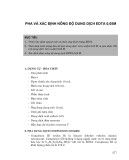
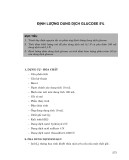
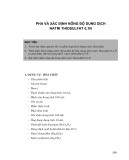
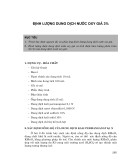
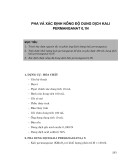
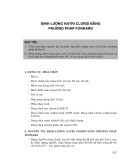
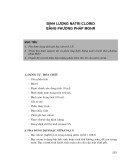
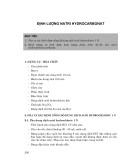

![Đề thi kết thúc học phần Nguyên lí Hóa học 2 [mới nhất]](https://cdn.tailieu.vn/images/document/thumbnail/2025/20251014/anhinhduyet000/135x160/69761760428591.jpg)













